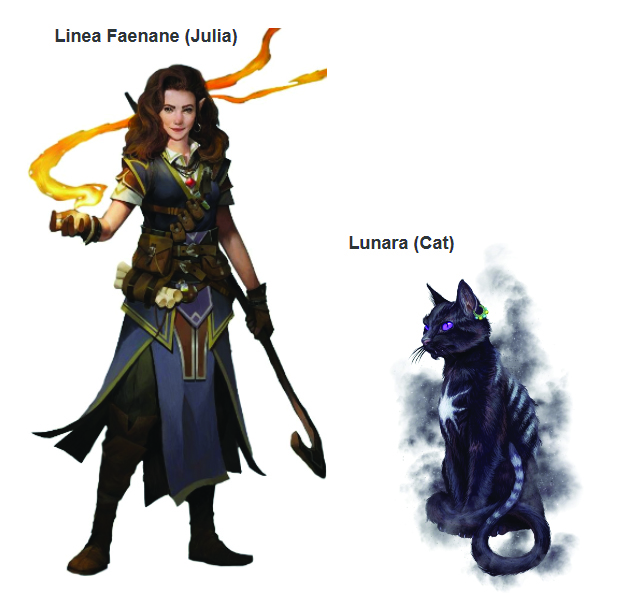By Julia Southwick | STC Member

An STC mentorship project with Bethany Aguad gave me this insight: Dungeons and Dragons is similar to technical communication. Fighting monsters as an Elven rogue might not seem to relate to work in Tech Comm, yet both challenges require thoughtful communication, working with a team, doing research, and applying critical thinking skills.
Dungeons and Dragons (D&D) is a fantasy role-playing game where each player creates a unique character that they will play. The game can focus on exploration, combat, role-playing, or some combination of the three. Each player creates a character sheet that defines the skills and abilities that the player’s character has developed. This includes skills like stealth (sneakiness) or perception (observation) and abilities like casting spells. The Dungeon Master (DM) creates and runs the entire game world.
The narrative is a collaborative experience among all participants. When players want to take any action in the game that requires a challenge, they will roll a die to determine the outcome. Based on a combination of the number on the die, the character’s skills, and the difficulty of the action, the DM will describe the outcome.
In my first session, we had mostly new players working with some veterans, so we reviewed how to use Roll20.net, a browser-based app for playing online. I played as Linea Faenane, the High Elf Wizard, and her feline familiar (magical companion), Lunara. Our DM, Bethany, provided the scenario, which is similar to a scope of work for a project.
Our characters worked for the Harpers, an organization that seeks to do good, working in the shadows of Waterdeep. Our contact assigned us a job: An old bookseller, Uza, has trapped a monster in her shop and fears for her books and cat. In exchange for efficient, speedy work, our characters would receive handsome compensation.
We went to the tavern to interview Uza. We listened carefully to her story and asked questions like: “Did you see the monster clearly?” and “Can you describe the interior of your shop for us, please?” Together, we sought an understanding of what we were facing, just as we would in a new technical communications project. Once we established all the necessary details, Uza took us to her store and waited safely outside while we went inside to both battle the monster and find her cat.
Once inside, Linea asked Lunara to look for Uza’s cat. While exploring the shelves looking for clues, just like reviewing notes from subject matter experts (SME), the group noticed some scorch marks, books about monsters, and the monster itself.
We defeated the monster and Linea used a spell to identify how the monster arrived in the shop — through an enchanted book. We called Uza in, and Linea explained her findings. Uza thanked the group for their help.
As technical communicators, our skills make us the ideal party members, both in D&D and on the job. We shine in a collaborative environment where our communication, research abilities, and critical thinking skills can enhance the effectiveness of those around us. How about giving D&D a try?
Julia Southwick (juliasouthwick96@gmail.com) is a technical writer at JHT Inc in Orlando, FL. She graduated from the University of Central Florida with a B.A. in English – Technical Communication, and a minor in English Literature. Julia serves the Florida chapter of STC as Newsletter Editor and Communication Chair. Julia comes from a family of engineers and engineering types, so technical communication comes as naturally to her as breathing.


